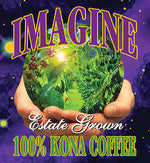Sipping into Serenity with Tea
Tea holds a profound place in cultures around the world, transcending borders and generations with its universal appeal.
From London to Japan, this beloved beverage boasts a rich tapestry of history and tradition, making it the second most consumed drink globally, after water.
Its enduring appeal through centuries is a testament to the deep cultural significance and the myriad of benefits it offers to its enthusiasts.
But maybe you haven’t heard some of the most interesting facts about tea. Buddha’s Cup delves into those…
1. The Ancient Origins of Tea

The story of tea begins in ancient China, with the legendary discovery by Emperor Shen Nong, who, as folklore has it, found tea when leaves from a wild bush blew into his boiling water.
This happy accident not only gave birth to the world’s first pot of tea but also marked the inception of a global phenomenon.
Over centuries, tea spread across Asia, weaving itself into the fabric of many cultures, from the imperial courts of China to the Zen monasteries of Japan, embodying a rich history steeped in tradition.
The history of tea plants in Hawaii is similarly interesting, and worth learning about.
2. Tea Varieties Around the World

Tea's global journey has given rise to an incredible diversity of types, each with its unique flavor profile and characteristics.
Green tea, known for its fresh, grassy notes, and black tea, celebrated for its robust, full-bodied flavor, are just the tip of the iceberg.
White tea offers delicate, subtle complexities, while oolong presents a harmonious balance of fruity and floral notes.
Herbal teas, made from herbs, fruits, and flowers, expand the palette even further, offering caffeine-free alternatives that delight the senses.
3. Tea and Tradition: Cultural Significance
Around the world, tea is more than just a beverage; it's a ritual, steeped in cultural traditions and ceremonies.
In Japan, the tea ceremony, or Chanoyu, is a meditative practice that embodies harmony, respect, purity, and tranquility.
Meanwhile, in the United Kingdom, afternoon tea is a quintessential custom that offers a pause for leisure and conversation. These traditions showcase tea's role in fostering community and connection across different cultures.
The Art of Tea Brewing

Brewing tea is an art form that varies greatly across cultures, from the meticulous steps of Gongfu Cha in China, which emphasizes the tea's aroma and flavor, to the simplicity of using tea infusers in the modern tea-drinking experience.
Each method offers a unique way to explore the depth and breadth of tea's flavors, demonstrating that the act of brewing is as much a part of the tea experience as the drink itself.
5. Tea's Impact on Health and Wellness
Tea is revered not only for its taste but also for its myriad health benefits. Tea shares some health benefits of kona coffee, with some exclusive ones.
Rich in antioxidants, tea has been linked to a lower risk of heart disease and stroke, improved brain health, and potential aid in weight management.
The presence of polyphenols and catechins in tea contributes to its health-promoting properties, making it a staple in wellness routines around the globe.
6. Tea in Different Forms: Loose Leaf vs. Tea Bags

The debate between loose-leaf tea and tea bags centers around flavor, aroma, and convenience.
Loose-leaf teas offer a more authentic and nuanced tea experience, allowing the leaves to fully expand and release their full spectrum of flavors.
Tea bags, while more convenient, can sometimes limit the infusion, affecting the tea's depth and character. The choice between the two often depends on personal preference and the desired tea experience.
7. The Journey From Leaf to Cup: Tea Processing
Tea processing is a delicate dance that transforms the freshly plucked leaves into the final product.
The process involves several stages, including withering, rolling, oxidation (for some types), and drying.
Each step plays a crucial role in developing the tea's flavor, color, and aroma, resulting in the diverse range of teas enjoyed around the world.
You Might Like: The Full Journey of Kona Coffee Beans
8. Tea's Global Impact: Economic and Social Perspectives
The tea industry is a significant economic driver in many countries, providing employment and livelihoods for millions.
From the tea plantations of Sri Lanka and India to the bustling tea markets of China, the cultivation and trade of tea have shaped social dynamics and contributed to the economic well-being of communities, highlighting its importance beyond just a beverage.
9. Unraveling the Mysteries: Tea Myths and Legends
Tea's rich history is intertwined with various myths and legends that add to its mystique.
Debunking common myths, such as the belief that green tea has less caffeine than black tea, helps to better understand and appreciate tea's true nature and benefits.
The stories behind tea, whether myth or fact, contribute to its enchanting allure.
10. Tea Trends: Innovations in the World of Tea
The world of tea is constantly evolving, with new trends and innovations emerging.
Specialty teas, unique blends, and tea-infused products are gaining popularity, reflecting a growing appreciation for high-quality, artisanal teas.
The rise of cold brew teas, matcha, and tea cocktails showcases the versatility of tea and its adaptability to modern tastes and lifestyles, promising an exciting future for this ancient beverage.
Why Tea Holds a Special Place in Hearts and Cups

Tea isn't just a beverage; it's a comforting ritual that links us to the past and brings solace in the present.
It plays a central role in gatherings and ceremonies, creating a shared experience that fosters dialogue and deepens relationships.
Whether a casual meet-up with friends or a formal tea ceremony, these moments shared over tea are imbued with meaning and a sense of belonging.
Tea's ability to bridge cultural differences is unparalleled. It serves as a universal language of hospitality and respect, transcending geographical and cultural boundaries. Through the global tradition of tea drinking, we discover common ground and celebrate the diversity that enriches our world.
The aesthetic pleasure of tea extends beyond its taste to the artistry involved in its preparation and presentation. From the elegant dance of loose leaves in hot water to the meticulous arrangement of teaware and accompaniments, tea offers a feast for the senses, inviting us to appreciate the beauty in the ritual.
Bottom Line
Throughout this article, we've examined the most interesting facts about tea available.
Whether you're drawn to the healthful qualities of hibiscus tea or the rich cultural tapestry of tea drinking, there's a place for tea in every cup and every heart.
Discover the perfect blend for your taste and health preferences in our Tea Collection, and let the enchanting flavors of Hibiscus Tea inspire your daily ritual.
FAQs
What is the origin of tea?
Tea originated in China as a medicinal drink over 5,000 years ago, according to legend, discovered by Emperor Shen Nong when a tea leaf accidentally fell into his boiling water. It has since evolved into a global beverage with a rich history across various cultures.
What are the main types of tea, and how do they differ?
The main types of tea include black, green, white, oolong, and herbal teas. They differ based on their processing methods and oxidation levels. Black tea is fully oxidized, green tea is unoxidized, white tea is minimally processed, and oolong tea is partially oxidized. Herbal teas, technically not teas, are infusions of herbs, fruits, or other plants.
How does tea culture vary around the world?
Tea culture varies significantly across the globe, from the Japanese tea ceremony, known for its Zen philosophy, to the British afternoon tea, a social event. In China, tea is integral to traditional hospitality, while in Morocco, mint tea is a sign of friendship and respect.
What are some health benefits associated with drinking tea?
Drinking tea has been linked to numerous health benefits, including improved heart health, enhanced immune function, better digestion, and stress relief. Tea's antioxidants, such as catechins and flavonoids, contribute to these benefits by protecting the body against free radicals.
Are there any unique or lesser-known facts about tea?
One lesser-known fact is that all traditional teas come from the same plant, Camellia sinensis, and their differences arise from how they are processed. Another interesting fact is that tea is the second most consumed beverage in the world after water, highlighting its universal appeal.













